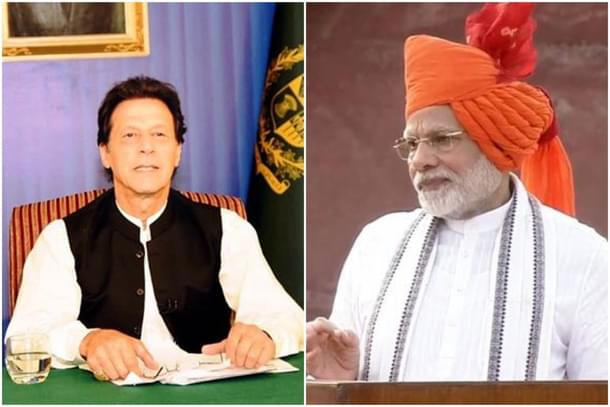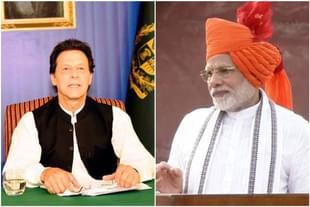Politics
It’s Advantage India: What The Post-Pulwama Communication Strategies Of India And Pakistan Tell Us
Alimpan Banerjee
Mar 05, 2019, 12:56 PM | Updated 12:56 PM IST
Save & read from anywhere!
Bookmark stories for easy access on any device or the Swarajya app.


We have all been treated to passionate social media exchanges about the virtues of war and peace post Pulwama, with people adopting stances based on their political and philosophical reading of the situation.
Given this context, the communication presented by both the countries in response to the escalating situation along with the response and countenance of the prime ministers of India and Pakistan provides important indications to the way the issue is being assessed and approached.
Needless to say, the communication strategies have been that of steady contrast and, therefore, it would be interesting to analyse the comparative efficacy of their respective approaches.
Th Communication Strategy Revealed A United Front For India
Pakistan Prime Minister Imran Khan chose to reach out to his country through an address to the public, and used that to divulge the strategies adopted by his country. Khan not only addressed the people but went ahead to provide details of the military operations, most of which has been found to be untrue through independent verification.
In stark contrast to this, Prime Minister Narendra Modi deputed a spokesperson of the relevant ministry and the armed forces to brief the nation on the details of the conflict. This clearly showcased his intention to have the experts and officials, involved in the operations against terror camps in Pakistan, provide relevant details of the conflict to the people of the country.
This has also allowed India to present to the world how the different wings of the government coordinated to tackle this crisis with the response not being driven by one institution or one man. This approach can also be deduced from his remark: “India will fight, live, work and win as one”, and his decision to depute Minister of External Affairs Sushma Swaraj and National Security Adviser Ajit Doval to lobby world powers, and build an international consensus in favour of India (which ultimately led to the release of Wing Commander Abhinandan Varthaman).
The Indian PM carefully chose political and government events to address the issue of the escalating tensions along the border to avoid any overt expression by the Indian authorities of panic or bedlam. His message to the Indian public was loud and clear: the government was in firm control of the situation and it is being dealt strategically by the relevant arms of the state.
While Imran Khan emerged as a stooge of the military, parroting misinformation fed to him by his military bosses, Modi through a calculated communication strategy managed to rally all the agencies and fora to act in unison to respond collectively in this hour of need. Importantly, the communication strategy was successful in preventing the general population from getting panic stricken like what happened in major cities of Pakistan.
Unstoppable India Versus Pakistan On Pause
Though Modi was criticised for his decision to address a gathering of booth level party workers during the border crisis, it sent the message that the democratic institutions of the country will continue to function unabated in the face of external disruptions. His address at the National Science Day Awards conveyed that India remains committed to a path of innovation and progress irrespective of the designs of our neighbouring country. It was the balm necessary to keep the public morale high and diffuse the mounting pressure of public opinion on the armed forces.
Pakistan, on the other hand, scurried to shut down multiple airports in its heartland, power supply was disrupted in major cities and the military took charge of various sensitive establishments of Pakistan. Ideally, in a democratic nation, it should have been the civilian forces guarding the mainland and the armed forces protecting the borders.
Looked at from whichever prism, India was setting the narrative, Pakistan was reacting. Pakistan looked insecure; India was self-assured of its diplomatic and military clout.
Attack Versus Defend
The strategy adopted by the Indian armed forces to target terror camps within Pakistani territory, clearly branding it as a non-military act of self-defence, drew support from the international community at large. This was because the Indian government has established numerous times with adequate evidence that such attacks against India were being planned on Pakistani soil. What helped India’s case was that there were zero civilian casualties reported from the airstrike.
Contrast this to the blatantly provocative attack by the Pakistan Air Force on Indian military establishments using F-16 fighter jets, which Pakistan is only authorised to use in counter-terror operations as per reports.
One response was calculated to prevent any further damage to one’s homeland and ensured that there was no collateral damage. The other was a blatant act of aggression in violation of their end-user agreements and international norms. These actions while gaining credibility for India for a restrained and targeted attack has isolated Pakistan for being the aggressor and escalating the situation in South Asia. At the end, the narrative has moved to condemnation of terror and not Kashmir, as the Pakistani establishment would have preferred.
It can be argued that this was possible because of close coordination between the Ministry of External Affairs and the armed forces through the offices of Ajit Doval. Pakistan’s response on the other hand was a knee-jerk response generated at the behest of Imran Khan’s army bosses without any thought to international ramifications.
Pakistan Propelling Its Own International Isolation
The Pakistani military establishment in its zeal to claim a token victory, released videos of Wing Commander Abhinandan Varthaman which turned out to be counterproductive by exposing their designs to the international community. PM Modi not only refused to bow to their pressure tactics, but also launched a parallel diplomatic offensive invoking the Geneva Convention. India was focused on getting sympathetic nations to move resolutions in the UN and lobbying other Islamic countries in the backdrop of the OIC Conference to isolate Pakistan and force them to release our war hero within 72 hours of his capture. This is a clear example of the lack of planning and coordination within the Pakistani system. It is simultaneously also an example of the effective diplomatic outreach from India’s side.
Into The Future
Having exposed Pakistan’s lies on the use of F-16 aircraft and the visible softening of China’s pro-Pakistan stance, India stands at the cusp of making further breakthroughs in its efforts to counter terror-supporting nations in the region. The economic blockade of Pakistan is going to further hurt their already distressed economy, forcing them to come to the table so as to ensure subsistence for its citizens.
The global pressure on outfits like Jaish-e-Mohammed and Lashkar-e-Taiba post Pulwama and Pathankot is going to be resolute, after which, perhaps, Pakistan’s defer and deflect tactics over counter terrorism will no longer cut ice in global geopolitics. Next time they propose to come to the table, the terms and conditions will be India’s not theirs. The calculated communication and response is clearly, advantage India, advantage Modi.





